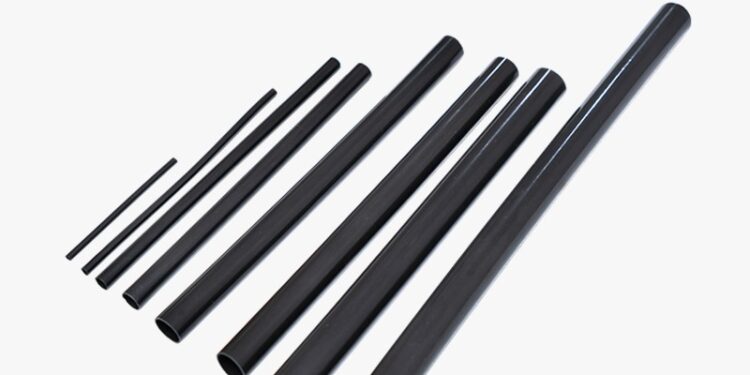Introduction to the Endoscope and Its Components
Endoscopes have revolutionized the way medical professionals diagnose and treat a variety of conditions. These remarkable instruments allow for minimally invasive procedures, enabling doctors to see inside the body without the need for large incisions. But what makes an endoscope work so effectively? One key component plays a critical role: bending rubber. This flexible material is essential in allowing endoscopes to navigate through complex anatomical structures while maintaining functionality and precision. Understanding how bending rubber integrates with various parts of an endoscope can shed light on its significance in modern medicine and pave the way for future advancements in this field. Let’s dive into the fascinating world of endoscope parts and explore how bending rubber enhances their performance.
The Role of Bending Rubber in Endoscopes
Bending rubber plays a crucial role in the functionality of endoscopes. This flexible material allows for intricate maneuverability within the human body, enabling doctors to navigate through tight spaces with precision.
When performing procedures such as colonoscopies or bronchoscopies, bending rubber facilitates the articulation of various endoscope parts. Its adaptability ensures that healthcare professionals can reach difficult areas without causing discomfort to patients.
Additionally, this specialized rubber provides stability and reinforcement to delicate components. It acts as a protective layer against wear and tear, enhancing the longevity of the instrument while maintaining its flexibility.
The combination of versatility and durability makes bending rubber an essential element in modern medical technology. It not only improves operational efficiency but also enhances patient safety during minimally invasive procedures.
Types of Bending Rubber Used in Endoscopes
Bending rubber comes in various types, each tailored to specific functions within endoscopes. Soft bending rubbers are commonly used for the flexible segments of an endoscope. They provide a gentle yet firm manipulation, allowing doctors to navigate through complex anatomical pathways.
Another type is the reinforced bending rubber, which adds durability and strength. This type withstands more stress during procedures and ensures that the instrument maintains its shape under pressure.
Additionally, specialized formulations exist that enhance biocompatibility and reduce friction. These are crucial for minimizing irritation during extended use inside the body.
Some manufacturers develop customized blends designed for particular medical applications. These innovative materials can improve flexibility or increase resistance to wear over time, adapting seamlessly to diverse clinical environments.
Benefits of Using Bending Rubber in Endoscopes
Bending rubber is a crucial component in the design of endoscopes. This flexible material allows for enhanced maneuverability during procedures. Surgeons can navigate through intricate pathways with precision, minimizing discomfort for patients.
The elasticity of bending rubber also contributes to better image quality. It supports various camera angles without compromising visibility. This feature is vital when examining hard-to-reach areas within the body.
Durability is another significant advantage. Bending rubber withstands repeated use and exposure to sterilization processes, ensuring longevity in equipment life.
Additionally, this material provides a level of cushioning that protects both the device and surrounding tissues during insertion and movement. The incorporation of bending rubber makes endoscopy safer and more efficient for both medical professionals and their patients.
Challenges and Limitations of Bending Rubber in Endoscopes
Bending rubber plays a crucial role in the flexibility of endoscopes, but it does come with its own set of challenges. One significant limitation is wear and tear over time. Frequent use can lead to degradation, impacting performance and safety.
Another concern is the manufacturing process. Producing high-quality bending rubber that meets medical standards requires precision. Any deviation can result in compromised functionality.
Additionally, temperature sensitivity poses issues during procedures. Extreme conditions may affect the material’s integrity and elasticity, leading to unexpected complications.
Compatibility with other materials also becomes vital. The interaction between bending rubber and surrounding components must be seamless to avoid friction or damage.
Balancing flexibility with strength remains a constant challenge for engineers developing next-generation endoscopes. Striking this balance is essential for ensuring both maneuverability and durability in clinical settings.
Innovations and Advancements in Bending Rubber Technology for Endoscopes
Recent innovations in bending rubber technology are transforming the landscape of endoscope design. Engineers are experimenting with new polymer blends that enhance flexibility without compromising strength. These advancements allow for smoother navigation through tight anatomical spaces.
Moreover, the integration of smart materials is gaining traction. This includes thermochromic and shape-memory polymers that adapt to temperature changes or external stimuli, providing real-time feedback during procedures. Such features could revolutionize how surgeons interact with instruments.
Manufacturers are also focusing on biocompatibility. New formulations ensure that bending rubber minimizes irritation during long procedures, enhancing patient comfort and safety.
3D printing has further accelerated development cycles, enabling rapid prototyping of custom components tailored to specific medical needs. This capability allows for more personalized approaches in endoscopic surgeries.
With ongoing research and collaboration between biomedical engineers and healthcare professionals, the future looks promising for bending rubber applications in endoscopes.
Future Possibilities and Potential Impact of Bending Rubber Integration in Endoscopes
The future of bending rubber integration in endoscopes looks promising. As technology advances, we can expect even more flexible designs that enhance maneuverability. This flexibility will allow for better navigation through complex anatomical structures.
Imagine a scenario where endoscopes can adapt their shape in real-time. Such adaptability could significantly reduce the risk of injury during procedures while improving overall patient comfort.
Moreover, incorporating smart materials into bending rubber may lead to self-regulating capabilities. These materials could respond to environmental stimuli, adjusting firmness or elasticity based on specific needs during an examination.
Research is also delving into eco-friendly options for bending rubber production. Sustainable materials not only meet healthcare standards but also address growing environmental concerns.
With these advancements, the potential impact on diagnostics and treatment efficacy could be monumental. Enhanced visualization combined with improved dexterity will likely change how medical professionals approach minimally invasive interventions.
Contact Us
The integration of bending rubber in endoscope parts plays a crucial role in enhancing the functionality and effectiveness of these medical devices. This innovative material not only improves maneuverability but also provides flexibility, making it essential for complex procedures.
As advancements continue to emerge, the future looks promising for incorporating new technologies within endoscopes. These innovations could lead to further enhancements in patient care and diagnostic capabilities.
If you have questions or would like more information about how bending rubber is integrated into endoscopes or any other related topics, feel free to reach out. We’re here to help you navigate through this fascinating field of medical technology. Contact us today!





